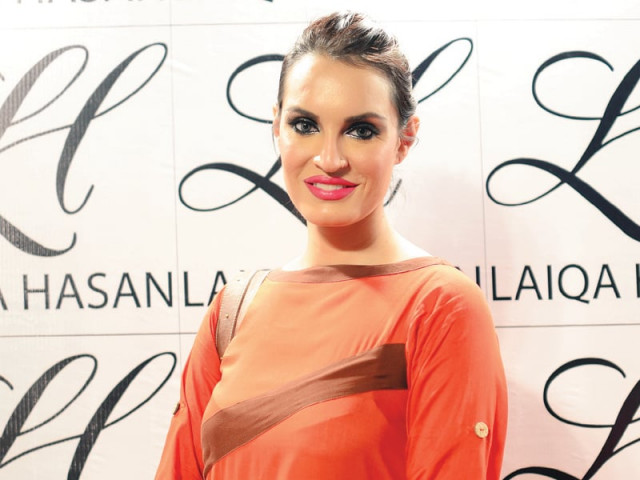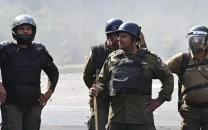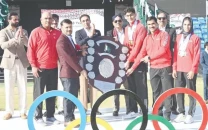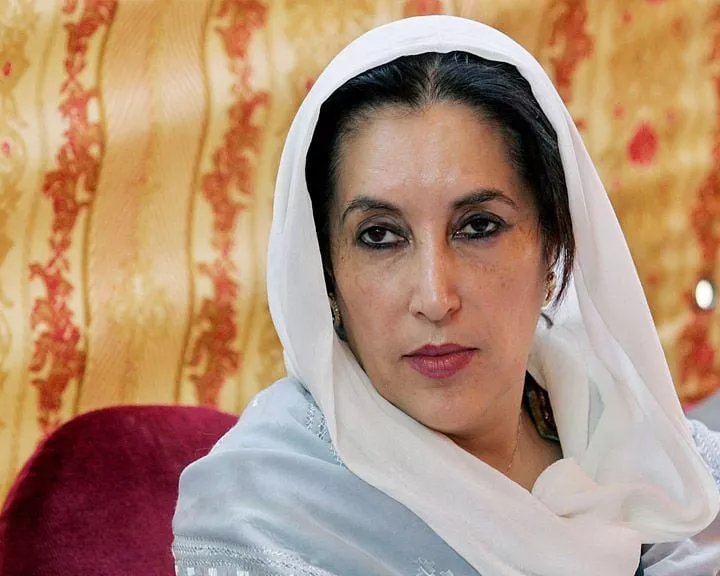Sugar-coated confessions of Pakistani models
Superficial elements in fashion industry put pressure on models to lose weight.

"It’s the designers and photographers. They force us to lose weight," Model Nadia Hussain. PHOTO COURTESY ANASTASIA PR/FILE
When Vogue Australia’s ex-editor Kirstie Clements launched her book The Vogue Factor, she exposed supermodels’ secret ways of becoming thin; claiming that some models eat tissue paper to feel full and others starve themselves for days.
Are Pakistani models also going to shocking lengths to become underweight? Yes, but sadly, nobody wants to talk about it. Like any other part of the world, designers in Pakistan use size zero mannequins to make clothes and then want the same effect on the ramp. The scenario results in a model’s ultimate desire: becoming rail-thin.
According to model Fayezah Ansari, who recently came clean on her drug addiction, a lot of new models who come from humble backgrounds feel intimidated and are desperate for fame. Fayezah is careful about her words when asked if models are victims of eating disorders. “It has never happened to me or any other models I know,” she says. “All my life, people have said I’m too thin and that I must be bulimic or anorexic. But that’s not true. I just fit into everything.”
“If the clothes don’t fit, then designers get upset,” admits Fayezah. Right after that slip-of-the-tongue, she adds, “If a girl has put on some extra weight, nobody is rude to her. They just tell her that she should wear a different outfit. The designers work with us and know what Pakistani women look like.”
A former model, who chose not to be named, tells us that our worst fears are in fact a reality. “Drug abuse is the biggest problem in the Pakistani fashion world,” she says. “Drugs are used to dehydrate the body and kill appetite.” She gives examples of naturally thin women in the industry and also of models like Iraj, Nadia Hussain and ZQ who maintain their figures by exercise and diet control.

“Real men don’t want skeletons — it’s the other men [photographers and designers] in the industry who want to transform a girl into a stick. They pressurise women to become ultra-thin,” she says, referring to photographers, make-up artists and designers who create outfits for unrealistic models. “The industry is cut-throat. Models opt for tummy-tucks, full body liposuction and most have eating disorders,” she adds.
“Models stay thin by eating right and working out,” says former model Frieha Altaf, who is now the CEO of event management company Catwalk Productions and also a judge on Veet Miss Super Model Contest. “The pressure to stay thin is part-and-parcel of the job. We don’t have plus size models in Pakistan but our models are not ultra thin either. Most countries’ girls are one size — since we don’t have too much competition our girls vary.”
She also says the backstage weight conversations include gossip, jealousy or sharing tips. “Poor Ayyan is always a topic of discussion. She is so lovely, but struggles with weight issues,” says Frieha. She believes ambition and drive makes you a model, like model Saima Azhar. “She is a prime example of a girl who shed 40 pounds to become the most wanted print model,” shares Frieha. “There was a contestant who was too thin in Veet Miss Super Model Contest. The nutritionist has put her on a plan; she was disqualified for Fashion week on being too thin.” Then she adds that the lazy contestants are told to work-out and lose weight.
When Ayyan was asked to comment on the speculations regarding her weight, she became furious. “I don’t have any weight issues. I am a size zero and I’m the top model,” she says. In an interview in February, she had said that size zero figures are banned internationally. “I’m not skinny and I don’t even want to be,” she had said.
While underweight models are banned in some countries, in Europe the ill-looking, under-age models have set the standards for the fashion world. Model Nadia Hussain says it’s not the girls who criticise each other about weight; it’s the designers and photographers. “They force us to lose weight,” says Nadia. “Some models will starve themselves or throw-up, but a lot of them are naturally skinny so they eat everything,” she shares. “We do tell each other if someone has put on some extra pounds. Amongst my lot, Rubab has always had weight issues and we would give her tips on how to lose it.”
It’s sad that despite the truth about drug abuse and eating disorders within the industry, those connected with it want to put a cover on it. For an arena widely known to be cruel and ruthless, ironically, here there is unity in silence. It’s high time fashion councils took health initiatives and discouraged underweight and unhealthy looking models.
Published in The Express Tribune, April 7th, 2013.
Like Life & Style on Facebook for the latest in fashion, gossip and entertainment.



















COMMENTS
Comments are moderated and generally will be posted if they are on-topic and not abusive.
For more information, please see our Comments FAQ